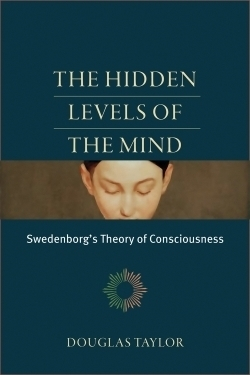The Hidden Levels of the Mind
Swedenborg's Theory of Consciousness
Analysis of theological documents can reveal as much about the interpreter as the original author, inspiring artistic endeavors and spawning a complex division in the publishing industry. The writings of Swedish visionary Emanuel Swedenborg (1688-1772) are no exception. This scientist and philosopher delved into the deeper elements of spiritualism, rather than confining himself to strict religious dogma, but his words remain subject to personal comprehension.
The need to define and explore his otherworldly descriptions elicits a considerable amount of soul-searching, leading to the publication of Swedenborg-based fiction and nonfiction, even into the twenty-first century. In The Hidden Levels of the Mind, Douglas Taylor attempts to grasp a difficult concept and boil it down to a “system” any layperson can understand—the mind is the gateway between our physical reality and the spiritual realm, a connection that must be explained. The author presents his material in eight concise chapters, along with a critical essay by scholar Reuben P. Bell.
Taylor’s near-formulaic approach gives this articulate, thought-provoking book a pedantic tone. But his meticulous research ultimately makes up for the blackboard-style delivery, which includes eleven diagrams one would expect to see in a church school classroom. These useful illustrations serve a dual purpose—clarification and stimulation. The reader may be spurred to question Swedenborg’s ideas, instead of accepting yet another eloquent theory.
Key to Swedenborg’s philosophy is a crucial process known as “regeneration,” which is perhaps another form of the traditionalist’s “rebirth.” Taylor discusses three levels of the mind: rational, middle natural, and sensory, and differentiates between internal and external. Then he breaks down each part, describing the various functions, such as the imagination:
When we think of imagination, we think of looking forward—modifying and changing the images that are in the memory, reshaping them, putting them into new relationships and combinations. That is what inventors do, making it possible to create new things and to improve on old ones.
Though intriguing, and slanted toward a contemporary audience, a musty, old-fashioned rehash of obvious Christian tenets will make an occasional appearance, relegating its “newness” to the back of an attic. In this excerpt, a vague, pulpit expression leaves the reader puzzled:
This first step in the process of regeneration is therefore a complete submission to what the Lord has revealed. We cannot reason our way into the spiritual rational level, or approach it from beneath, that is, from sense perceptions and conclusions based on them. Spiritual things come from above, not from below, and so we must look upward, to the Word of God.
A native of Australia, Douglas Taylor is an ordained Swedenborgian minister with a background in French and English literature and the author of three additional titles. He lives in Pennsylvania.
An enlightening guide, The Hidden Levels of the Mind will appeal to those seeking a critical view of Swedenborg; it serves as a practical tool and also provides supplementary information on the mysticism of this famous theologian.
Reviewed by
Julia Ann Charpentier
Disclosure: This article is not an endorsement, but a review. The publisher of this book provided free copies of the book and paid a small fee to have their book reviewed by a professional reviewer. Foreword Reviews and Clarion Reviews make no guarantee that the publisher will receive a positive review. Foreword Magazine, Inc. is disclosing this in accordance with the Federal Trade Commission’s 16 CFR, Part 255.

